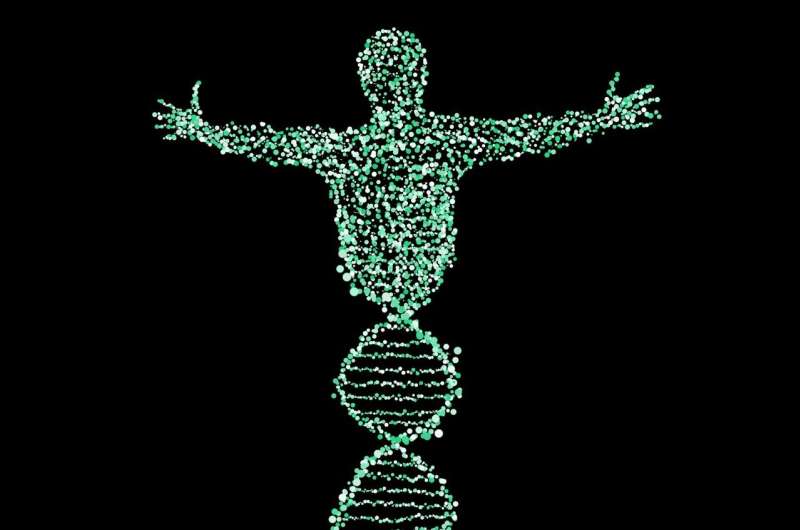DNA left behind without a touch

A person can leave DNA on a surface without directly touching it, a Flinders University study has found, with the longer someone spends in a room the more likely they are to leave a trace of themselves behind.
Recently published in the journal Forensic Science International: Genetics and led by Lucas Puliatti, a Flinders University honors graduate, the study looked at how much DNA was deposited by people across varying distances and time periods.
DNA collection plates were placed around individuals' desks, spaced out between 0.5 to 5 meters, and left for one day to six weeks before being swabbed and profiled.
Without anyone directly touching the collection plates, DNA from multiple people was present after only one day, with the DNA profiles stronger the closer the plates were to an individual and the longer they stayed out.
Co-authors Dr. Oliva Handt from Forensic Science SA and Dr. Duncan Taylor from Flinders University's College of Science and Engineering and Forensic Science SA say that advancements in forensic science have seen DNA profiles able to be generated from very limited samples.
"This brings into question how people's DNA may end up on particular surfaces, a question we have to understand if DNA evidence is going to be useful for police investigating, or courts deliberating over a crime," says Dr. Taylor.
"A person may have deposited their DNA by touching something, but our research shows it may also have been deposited by that person merely being in close proximity."
The results showed distance and time were the key factors in how much DNA was likely to be found.
The collection plates that sat within two meters of the office desks collected the most DNA, while those beyond four meters were very unlikely to collect any DNA at all.
In terms of time, the study showed the longer a person was in the vicinity of a surface, the more likely their DNA would be detected, with the amount of DNA deposited also increasing over time.
The authors say as well as helping to understand how DNA might become present during a crime, the study shows the importance of avoiding cross contamination.
"It doesn't take much to leave your DNA behind, and this study shows the importance of all the proper personal protective equipment, such as masks and gloves, that are used in forensic laboratories," says Dr. Taylor.
"The level of DNA an individual transfers to untouched items in their immediate surroundings' by Lucas Puliatti, Oliva Handt and Duncan Taylor is published in the journal Forensic Science International: Genetics.
More information: Lucas Puliatti et al, The level of DNA an individual transfers to untouched items in their immediate surroundings, Forensic Science International: Genetics (2021). DOI: 10.1016/j.fsigen.2021.102561
Provided by Flinders University




















